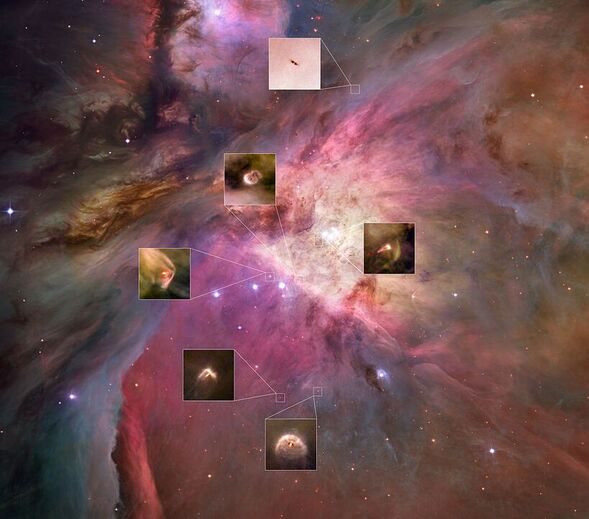Research
PhD at ESO: Proplyds
Topic: Constraining external photoevaporative winds of proplyds with high-resolution integral field spectroscopy
PI: Dr. Carlo F. Manara | ERC-funded WANDA team
(Winds ANd Disk structures near and Afar)
Start: September 2022
PI: Dr. Carlo F. Manara | ERC-funded WANDA team
(Winds ANd Disk structures near and Afar)
Start: September 2022
|
My work involves studying external photoevaporation at act in order to disentangle the effects of internal and external photoevaporation.
To provide background for this topic, a formation of a new star leaves behind gaseous dusty matter, which surrounds the newly born star in the form of a disk. These disks are the birthplaces of new planets, eventually forming a planetary system. When those protoplanetary disks are exposed to strong ultraviolet radiation of massive stars, it gives rise to external photoevaporation and such photoevaporated objects are called proplyds. This effect plays a significant role in shaping the disk sizes, shortening the timescale available to form planets. Internal photoevaporation, on the other hand, is driven by the central host star. For this effort, I use Adaptive Optics-assisted VLT/MUSE-NFM integral field observations of proplyds in the Orion Nebula Cluster and beyond. |
European Space Agency (ESA): Micrometeoroids
I worked as a researcher in the Gaia mission team, guided by astrometry expert Dr. Jos de Bruijne in 2019–2021. I analyzed micrometeoroid impacts on the Gaia spacecraft and modeled the physical properties of the impactors. The project also involved the detection of anomalies in time series; for this purpose, I experimented with a number of algorithms, including machine learning. The goal of this project was to pin down the micrometeoroid flux at the Lagrange-2 point. The results are in preparation to be published.
Publication:
Aru, M.-L., de Bruijne, J. , et al. Micro-meteoroids at the second Lagrange point as seen by Gaia. (in prep.)
Publication:
Aru, M.-L., de Bruijne, J. , et al. Micro-meteoroids at the second Lagrange point as seen by Gaia. (in prep.)
Master in Space Sciences: Exoplanets
In this project, I estimated the capability of the Extremely Large Telescope’s (ELT) Mid-infrared Imager and Spectrograph (METIS) to characterize exoplanets. I simulated a representative population of planets, their astrometric signature and parameters for direct imaging, that could be detected within Gaia’s astrometric precision. My main working tool was Python.
Bachelor of Science in Physics: Stellar Physics
I analyzed changes in the emission line of a Yellow Hypergiant, HR 8752 [N II] at 6583 Å.
This project involved reducing 20 years of HR 8752's spectral data with the software IRAF, and analyzing the star’s behavior based on its [N II] emission line's equivalent width. The data reduction routine involved using a comparison lamp’s spectrum, and zero and flat-field exposures. In a separate internship, I learned to operate a 1.5m telescope (Cassegrain reflector), and carried out new observations of the yellow hypergiant.
This project involved reducing 20 years of HR 8752's spectral data with the software IRAF, and analyzing the star’s behavior based on its [N II] emission line's equivalent width. The data reduction routine involved using a comparison lamp’s spectrum, and zero and flat-field exposures. In a separate internship, I learned to operate a 1.5m telescope (Cassegrain reflector), and carried out new observations of the yellow hypergiant.
